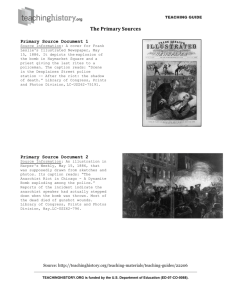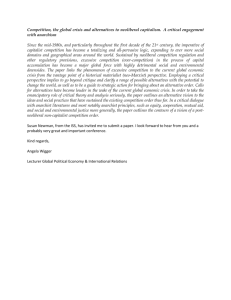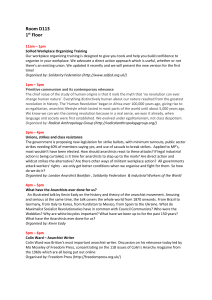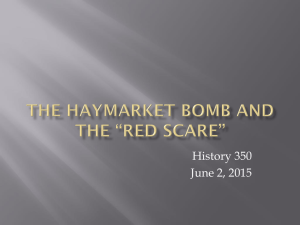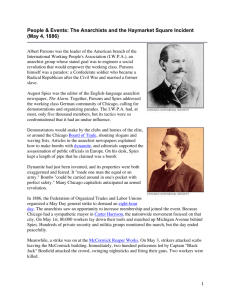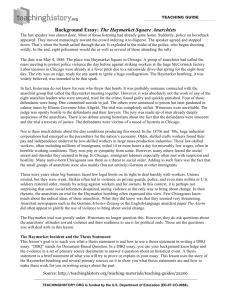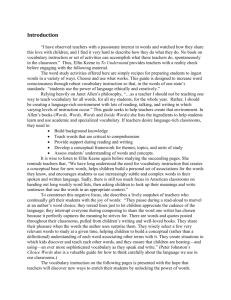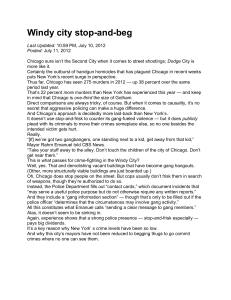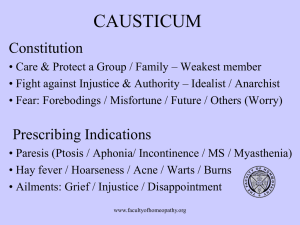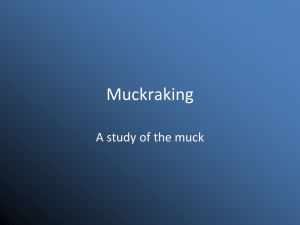The Anarchist Press and the “Voice of Dynamite”
advertisement
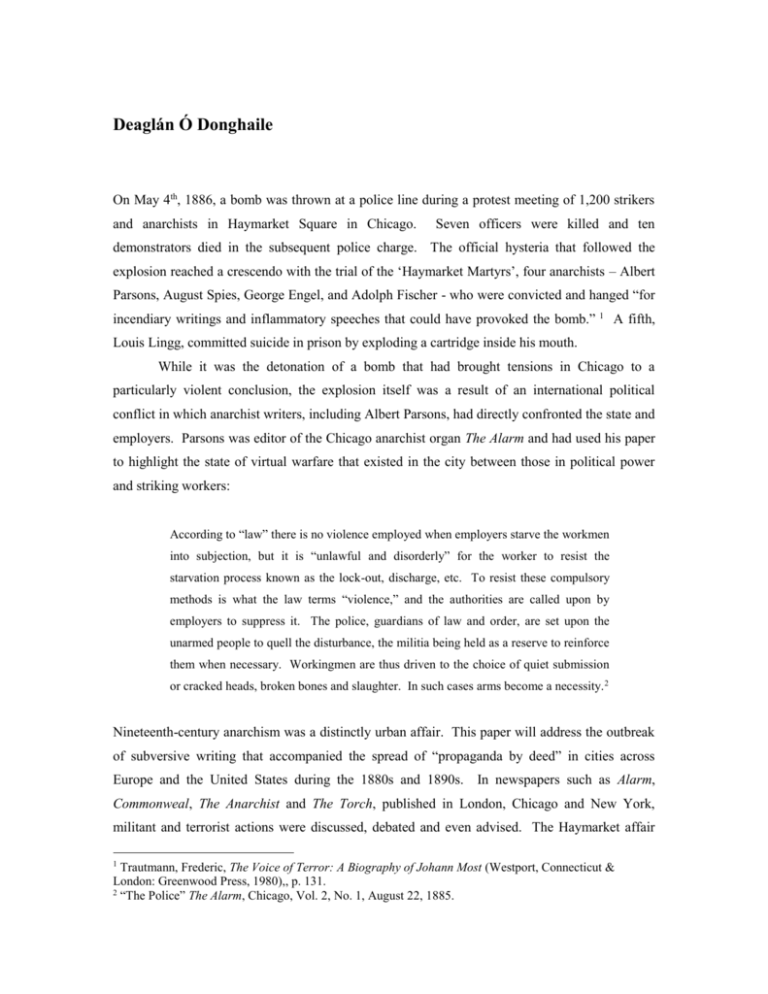
Deaglán Ó Donghaile On May 4th, 1886, a bomb was thrown at a police line during a protest meeting of 1,200 strikers and anarchists in Haymarket Square in Chicago. Seven officers were killed and ten demonstrators died in the subsequent police charge. The official hysteria that followed the explosion reached a crescendo with the trial of the ‘Haymarket Martyrs’, four anarchists – Albert Parsons, August Spies, George Engel, and Adolph Fischer - who were convicted and hanged “for incendiary writings and inflammatory speeches that could have provoked the bomb.” 1 A fifth, Louis Lingg, committed suicide in prison by exploding a cartridge inside his mouth. While it was the detonation of a bomb that had brought tensions in Chicago to a particularly violent conclusion, the explosion itself was a result of an international political conflict in which anarchist writers, including Albert Parsons, had directly confronted the state and employers. Parsons was editor of the Chicago anarchist organ The Alarm and had used his paper to highlight the state of virtual warfare that existed in the city between those in political power and striking workers: According to “law” there is no violence employed when employers starve the workmen into subjection, but it is “unlawful and disorderly” for the worker to resist the starvation process known as the lock-out, discharge, etc. To resist these compulsory methods is what the law terms “violence,” and the authorities are called upon by employers to suppress it. The police, guardians of law and order, are set upon the unarmed people to quell the disturbance, the militia being held as a reserve to reinforce them when necessary. Workingmen are thus driven to the choice of quiet submission or cracked heads, broken bones and slaughter. In such cases arms become a necessity. 2 Nineteenth-century anarchism was a distinctly urban affair. This paper will address the outbreak of subversive writing that accompanied the spread of “propaganda by deed” in cities across Europe and the United States during the 1880s and 1890s. In newspapers such as Alarm, Commonweal, The Anarchist and The Torch, published in London, Chicago and New York, militant and terrorist actions were discussed, debated and even advised. The Haymarket affair 1 Trautmann, Frederic, The Voice of Terror: A Biography of Johann Most (Westport, Connecticut & London: Greenwood Press, 1980),, p. 131. 2 “The Police” The Alarm, Chicago, Vol. 2, No. 1, August 22, 1885. provided the American and British left with plenty of rhetorical material while bitter feeling over the executions alienated radical political opinion on both sides of the Atlantic for years. As the British anarchist press warned, the imminent class war would be a distinctly urban phenomenon: Great armies and vast cities are, indeed a source of weakness in dynamite warfare, furnishing, as they must, the most vulnerable points of attack for its wholesale destruction… At this moment a single wayfarer, with dynamite in his pocket, throws the cities of England in greater terror than would an army of a hundred thousand men landing at Dover. 3 Like The Alarm, The Anarchist used Haymarket to popularise its dynamite ideology and immediately after the explosion the paper lauded “The Doctrine of Dynamite” on its front page, warning that “the science of chemistry is stronger than public opinion, and can readily adapt itself to the open street”4 and warned: “They can never know but some individual in a crowd has a bomb ready for use, for they are easily made. No accomplices are necessary, consequently the danger to the police is very great.”5 This paper will examine why “the voice of dynamite”6 was a particularly urban phenomenon. “Dynamite: The Modern Agent of Revolution”, The Anarchist, London, No. 1, March, 1885, p.4. “The Doctrine of Dynamite”, The Anarchist, London, No.17, July 1st, 1886, p.1. 5 “Beware”, Ibid, p.3. 6 Quoted from Gazette des Tribuneaux, 27-28 April, 1894, reprinted as "A Terrorist's Defense: Émile Henry" in Woodcock, George (Editor), The Anarchist Reader (Glasgow: Fontana, 1977), pp.189-186, p.193. 3 4
